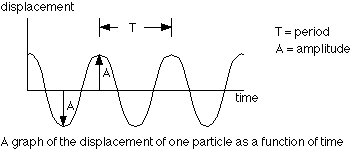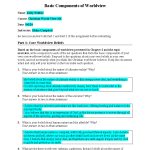A medium in a wave is the substance that carries the wave energy from one place to another. Imagine a ripple spreading across a pond— the water is the medium, allowing the wave to travel. In the same way, sound waves require a medium, such as air or water, to propagate. Understanding the role of a medium in a wave is key to grasping how waves move and interact with their environment. Join us as we delve deeper into the concept of what is a medium in a wave.
Understanding What a Medium in a Wave Is
Introduction
Have you ever stood by the ocean and watched the waves crash against the shore? Or have you seen ripples form when you throw a rock into a pond? Waves are all around us, but have you ever wondered what makes them move the way they do? One important aspect of waves is the medium through which they travel. In this blog post, we will dive into the concept of a medium in a wave and explore how it affects the movement of waves.
What is a Wave?
Before we delve into understanding what a medium in a wave is, let’s first clarify what a wave itself is. A wave is a disturbance or oscillation that travels through a medium, transferring energy from one place to another without transferring matter. This means that when you see a wave moving, what you are actually witnessing is energy being transmitted through a medium.
Types of Waves
There are different types of waves that we encounter in our daily lives. Some common examples include:
1. **Mechanical Waves**: These are waves that require a medium to travel through. Examples of mechanical waves include water waves, sound waves, and seismic waves.
2. **Electromagnetic Waves**: These waves do not require a medium and can travel through a vacuum. Examples of electromagnetic waves include light waves and radio waves.
What is a Medium?
Now that we have a basic understanding of what waves are, let’s talk about the medium. In the context of waves, a medium is the substance or material through which a wave travels. The medium can be solid, liquid, or gas, depending on the type of wave.
Properties of a Medium
The properties of a medium play a critical role in how waves behave. Some key properties of a medium include:
1. **Density**: The denser a medium is, the slower the wave will travel through it. For example, sound waves travel faster in water than in air because water is denser.
2. **Elasticity**: Elasticity refers to how easily a medium can be compressed or stretched. A more elastic medium allows waves to travel more efficiently.
3. **Temperature**: The temperature of a medium can affect the speed at which waves travel through it. Generally, waves travel faster in warmer mediums.
How Waves Travel Through a Medium
When a wave is generated, it creates a disturbance in the particles of the medium. These particles then transfer the disturbance to neighboring particles, causing the wave to propagate through the medium.
Compression and Rarefaction
In a wave, there are areas of compression, where particles are close together, and areas of rarefaction, where particles are spread apart. This alternation between compression and rarefaction is what allows the wave to move through the medium.
Examples of Waves in Different Media
Let’s look at some examples of waves traveling through different types of media:
Water Waves
Water waves are a common example of mechanical waves traveling through a liquid medium. When you throw a pebble into a pond, you can see ripples forming and spreading outwards. These ripples are waves traveling through the water medium.
Sound Waves
Sound waves are another example of mechanical waves, but they travel through a gas, liquid, or solid medium. When you speak or play music, the sound waves generated travel through the air (gas medium) and reach our ears, allowing us to hear the sound.
Earthquake Waves
Seismic waves generated during an earthquake travel through the solid medium of the Earth’s crust. These waves can cause the ground to shake and buildings to sway, highlighting the power of waves traveling through a solid medium.
In conclusion, a medium in a wave is the substance through which a wave travels, and it plays a crucial role in determining how the wave behaves and moves. Understanding the concept of a medium in a wave helps us appreciate the complexity and beauty of wave phenomena in our everyday lives. Whether it’s the gentle lapping of water waves on a beach or the powerful vibrations of sound waves, waves and their mediums are all around us, shaping the world we live in.
Wave Basics
Frequently Asked Questions
What role does a medium play in a wave?
A medium in a wave is the material through which the wave travels. It provides a medium for the wave to propagate, transferring energy from one point to another. The properties of the medium, such as density and elasticity, determine how the wave behaves and travels through it.
How does the medium affect the speed of a wave?
The speed of a wave is influenced by the properties of the medium it travels through. In general, waves travel faster through stiffer and denser mediums. For example, sound waves travel faster through solids than gases due to the denser medium providing more resistance.
Can waves travel without a medium?
Some types of waves, like electromagnetic waves, can travel through a vacuum where there is no medium. This is because electromagnetic waves do not require a material medium for propagation. However, mechanical waves, such as sound waves or water waves, do require a medium to travel through.
Final Thoughts
In conclusion, a medium in a wave refers to the substance or material through which a wave travels. It plays a crucial role in transmitting energy from one location to another. Without a medium, such as air, water, or solids, waves would not be able to propagate. Understanding the significance of a medium in a wave is essential in grasping the behavior and characteristics of different types of waves.






